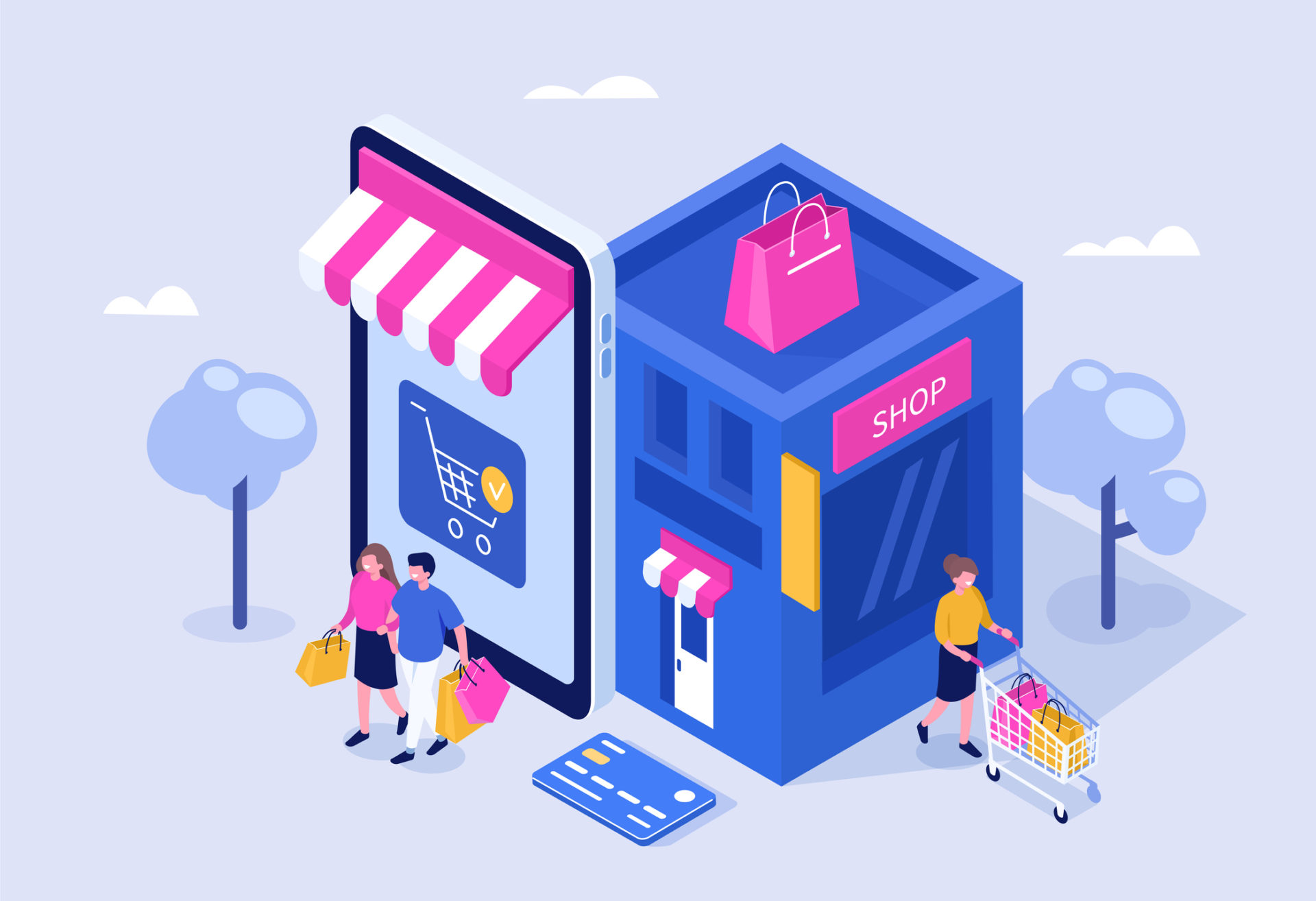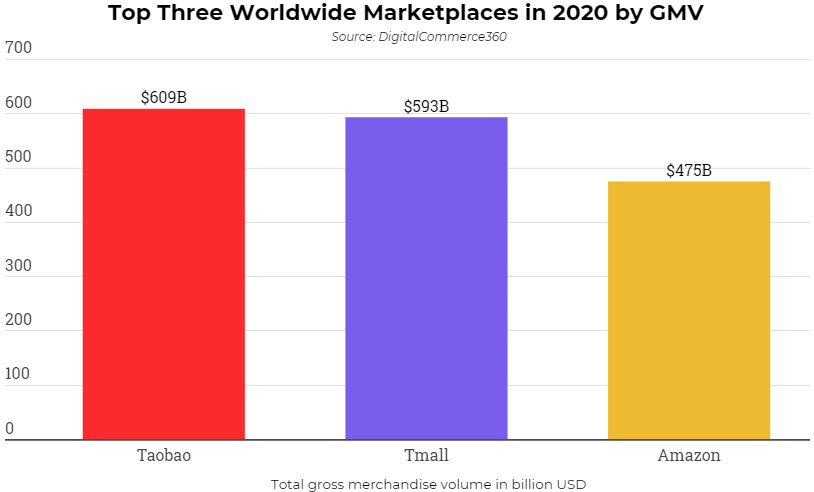
Top 9 of the impact of e-commerce in Europe & worldwide
The impact of e-commerce is considerable, and its implications extend from small businesses to global enterprises.
As a reminder, e-commerce is the buying and selling of goods (or services) over the Internet. It encompasses a wide variety of data, systems, and tools for online buyers and sellers. Including mobile shopping and encrypted online payments.
Most companies in the e-commerce market use an e-commerce shop and/or platform to conduct their online marketing and sales activities and to oversee logistics and order fulfillment. A more complete definition can be found in this article.
E-commerce has evolved in many ways since its inception and is changing the way we live, shop, and do business. Let’s take a look at the impact that e-commerce is having on our lives.
1. Large retailers are forced to sell online.
For many retailers, the growth of e-commerce has extended the reach of their brands. And had a positive impact on their bottom line. But for those retailers who have been slow to adapt to the online marketplace, the impact has not been the same.
Retailers that are in the middle are feeling the biggest changes in response to the impact of e-commerce.
In February 2019, for the first time, online sales closely outpaced general merchandise shops, including department stores, warehouse shops, and hypermarkets. As Amazon Prime has waived shipping costs, more consumers are embracing online shopping. Since the COVID19 crisis, this increase is even more visible. And businesses that have been slow to digitalize have had to face a considerable loss of revenue.
2. E-commerce helps small businesses sell directly to customers.
For many small businesses, the adoption of e-commerce has been a slow process. However, those that have embraced it have discovered that e-commerce can open the door to new opportunities.
Step by step, small business owners are launching e-commerce shops and diversifying their offerings, reaching more customers, and becoming more responsive to customers who prefer online or mobile shopping.
Before the pandemic, small businesses were working to expand their online presence. Today, 23% of small businesses believe they will need to strengthen their e-commerce capabilities to survive in a post-pandemic world. 23% of small business owners have created a website or updated their existing site since the COVID-19 restrictions began.
3. B2B companies are starting to offer B2C-like online ordering experiences.
B2B companies are striving to improve their online customer experience to catch up with B2C companies. This includes creating an omnichannel experience with multiple touchpoints and using data to build personalized relationships with customers.
E-commerce solutions enable self-service, provide more user-friendly platforms for price comparison and also help B2B brands to maintain relationships with buyers.
By 2026, B2B transactions are expected to reach $63,084 billion.
4. The rise of e-commerce marketplaces.
E-commerce marketplaces have been booming worldwide since the mid-1990s and the launch of the giants we know today, such as Amazon, Alibaba, and others.
In this report, we can see that Amazon is an exception in terms of the growth of the e-commerce market, but we can see that the 2 others are making progress.

By offering customers a wide selection and extreme convenience, Amazon has been able to evolve rapidly through innovation and optimization on the fly.
Amazon, in particular, is known for its unique growth strategy that has enabled it to achieve massive adoption and break sales records.
But Amazon is not doing this alone. In 2020, 52% of products sold on Amazon were sold by third-party sellers (i.e. other than Amazon).
These sellers also make high profits on sales made in the marketplace, although they are bound by strict rules imposed by Amazon.
Find out everything you need to know about marketplaces in this category.
5. Supply chain management has changed.
Survey data show that one of the main impacts of e-commerce on supply chain management is to shorten product life cycles.
As a result, producers are introducing wider and more varied ranges to guard against price erosion. But it also means that warehouses are seeing larger amounts of stock flowing through.
In response, some warehouses are now offering value-added services to help make e-commerce and retail operations smoother and more efficient.
These services include:
- Stock separation or storage for online and retail sales.
- Various packaging services.
- Inventory and logistics control.
6. New jobs are being created, but the number of traditional retail jobs is decreasing.
E-commerce jobs have doubled in the last five years and far outstrip other types of retail in growth. However, the growth of e-commerce jobs is only a small piece of the overall employment puzzle.
Here are some quick facts about the impact of e-commerce on employment:
- E-commerce jobs are up 334%, adding 178,000 jobs since 2002.
- Most e-commerce jobs are located in medium to large metropolitan areas.
- Most e-commerce companies have four or fewer employees.
- The downside is that the efficiencies associated with the shift away from traditional retailing may also result in job losses or workforce reductions.
As with any major market change, there are both positive and negative effects on employment.
7. Customers shop differently.
E-commerce (and now omnichannel retailing) has had a major impact on customers. There is a revolution in the way modern consumers shop.
Generation Y is the largest online shopper population (67%), but Generation X and Baby Boomers are close behind, with 56% and 41% respectively engaging in online shopping activities.
Most people now buy via social networks. However, other channels should not be neglected. You can be at the top of your game with acquisition levers and we explain how in this article.
8. Social media allows consumers to easily share products for purchase online.
Researchers have found that e-commerce has had an interesting social impact, especially on social media.
Today, e-commerce shoppers discover and are prompted to buy products or services based on recommendations from friends, peers, and trusted sources (such as influencers) on social networks such as Facebook, Instagram, and Twitter.
If you’ve ever wanted to buy a product recommended on Facebook or featured in an Instagram post, you’ve seen the social impact of e-commerce.
Do you want to develop an SMO strategy for your e-commerce? We explain how to develop your customer conversion with a multi-lever strategy right here.
9. E-commerce is growing rapidly worldwide.
In 2018, approximately 1.8 billion people worldwide made online purchases. On a global level, the number of online consumers also increased exceptionally between 2019 and 2020 (from 68% to 73%) and even continued to increase between 2020 and 2021 (from 73% to 75%). See more figures here.
The Chinese platform Taobao is the largest online marketplace, with a gross market value (GMV) of $484 billion. To give you an idea, Tmall and Amazon are in second and third place, with $458 billion and $339 billion respectively in annual GMV of the third-party global marketplace.
Finally
We have examined all the notable impacts of e-commerce. These impacts are significant and should not be taken lightly. They give a sense of the place of e-commerce in our lives today. And it will become more and more important. This is why it is important for companies that have not yet begun to digitalize to look into the matter. E-commerce will probably be the business of tomorrow.
Powerlab is a pioneer in e-commerce delegation. We can help you find solutions, improve or develop your e-commerce. So don’t be shy and contact us!